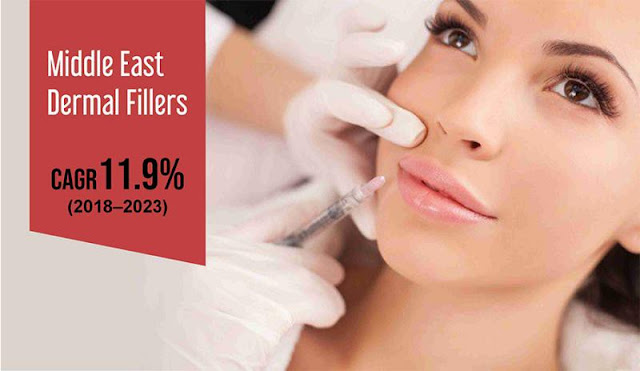Middle Eastern Dermal Fillers Market Predicted to Exhibit 11.9% CAGR during 2018—2023
The soaring geriatric population is one of the major factors propelling the demand for dermal fillers in the Middle East, owing to the fact that with increasing age, the body starts registering reduction in glandular and vascular tissues and loss of fibrous tissue. As per the United Nations Department of Economic and Social Affairs (UNDESA), the share of the people aged 60 years and above in Saudi Arabia is expected to be 25% of the total population of the country by the end of 2050.
Driven by the above-mentioned factors, the value of the Middle Eastern dermal fillers market is expected to rise from $34.3 million to
$67.7 million from 2017 to 2023. The market is set to advance at an 11.9% CAGR
during the forecast period (2018–2023). There are multiple types of dermal
fillers available in the market — hyaluronic acid-based, synthetic
polymer-based, hydroxylapatite-based, and collagen-based fillers. Amongst
these, hyaluronic acid-based fillers are expected to record the fastest growth
in utilization in the various Middle Eastern countries during the forecast
period, as they hydrate the skin and raise the skin volume by attracting water.
In the Middle East, Saudi Arabia has been observing the highest usage of dermal fillers since the last few years. This is primarily ascribed to the rising demand for cosmetic surgeries and procedures and the easy availability of skilled medical practitioners, capable of performing dermal filler procedures, in the country. In addition to this, the country is expected to observe huge growth in the geriatric population in the coming years, which will massively boost the demand for dermal fillers in the country in future.




Comments
Post a Comment